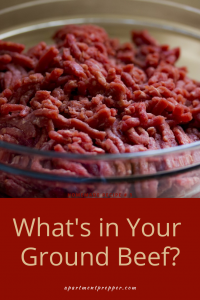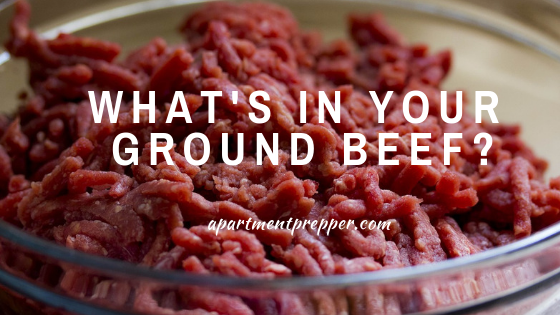This post is by Bernie Carr, apartmentprepper.com
You may remember back in 2012 when ABC news reported on lean, finely textured beef” and called it “pink slime.” There was a lot of backlash about it. People were outraged, meats containing the product were pulled from shelves and several food companies disavowed the use of it. According to Food and Wine, the manufacturer, Beef Products, Inc, BPI, sued ABC news for lost income due to bad publicity resulting from the derogatory term and report. They eventually settled out of court.
What is lean, finely textured beef?
According to Modern Farmer magazine there is nothing dangerous about lean, finely textured beef (LFTB). The product is safe and it is mainly done to avoid waste. When beef is processed, meat trimmings are collected then sent to a centrifuge to separate the meat from the fat. The fat part can be sold as tallow, while the meat is then treated with ammonia, which is commonly used as a de-contaminant, to make it safe for food consumption. It should be pointed out that the use of ammonia for food processing is banned in Canada and The European Union, so LFTB is banned in those countries as well.
This Fact Sheet from The Meat Institute includes more information about LFTB.
It’s now “ground beef”
According to Beefmagazine.com, Beef Products, Inc. (BPI), the company that produces lean finely textured ground beef approached the USDA about reclassifying their product. After going through the inspection and certification process, lean, finely textured ground beef has been reclassified as ground beef.
According to the article:
Nick Ross, BPI vice president of engineering, said, “…It was an extensive review that took well over six months and included consumer reviews, nutritional panels, tours of the plant where agency folks could get a first-hand look at the process and understand what we are doing at BPI.”
An article from New Food Economy indicates BPI has not announced any plans to sell it as a stand-alone product. As of this writing, it is still an ingredient. But there is nothing stopping them if they wanted to.
What this means to the consumer
This is a bit tricky, as there was never any regulation that mandated letting consumers know when the product was used as a filler. According to Food and Wine magazine, “Companies that used it as a filler in the past did not have to disclose it.” So you may have bought it or consumed it in restaurants and never knew.
Now, companies that sell “ground beef” with the added “ground beef” do not have to identify anything since it’s all classified as “ground beef.”
What should you do if you don’t want this in your ground beef?
Again, it is very hard to distinguish whether a product you buy at the grocery store contains this or not. Restaurants never had to name it as an ingredient, and groceries, that were previously obligated to name it no longer have to, now that it is reclassified. But you can take a few steps if you don’t want this in your meat.
Choose organic
Pick beef that is USDA certified organic, as the organic certification requirements prohibit the use of ammonia for treating meat.
Pick locally sourced beef
If you buy meat from a local farm, you know exactly what goes into it. You can purchase from farmer’s markets in your local area. I have spoken to several beef sellers in our farmer’s market who indicated they did use organic methods are were willing to show visitors at the farm, but could not afford the certification process so they did not have the “certified organic” label from the USDA.
You can also buy from grocery stores that sell locally grown beef. In Texas, the HEB groceries carry a line of meats from local farms.
Choose your cut of meat
Another way to ensure you know what’s in your ground beef is by choosing your own cut of meat such as sirloin and having it ground for you. I don’t have the space for a grinder, but I do choose a sirloin cut and have the butcher grind it up for chili or hamburgers.
Eat more home cooked meals
Eating more home-cooked meals is another way you can ensure you know what’s in your ground beef dishes. You choose exactly what you are putting in your food, and you’ll save money too. Look for deals and discounts before buying your ground beef to save money if you are shopping online.
There is no reason to be overly stressed about this. We really don’t know which restaurants used it in the past or present. Now grocery stores don’t have to divulge anything- we may have all consumed it before without knowing about it.
All you can do is be aware, ask questions about your food sources and do your own research. Ultimately, it is your choice as a consumer on what you want in your food.

© Apartment Prepper 2019


